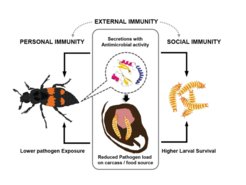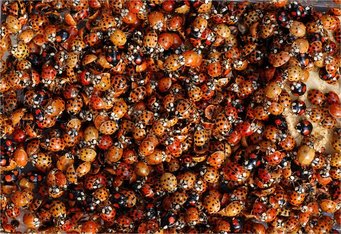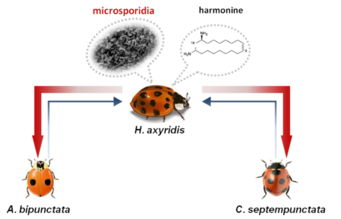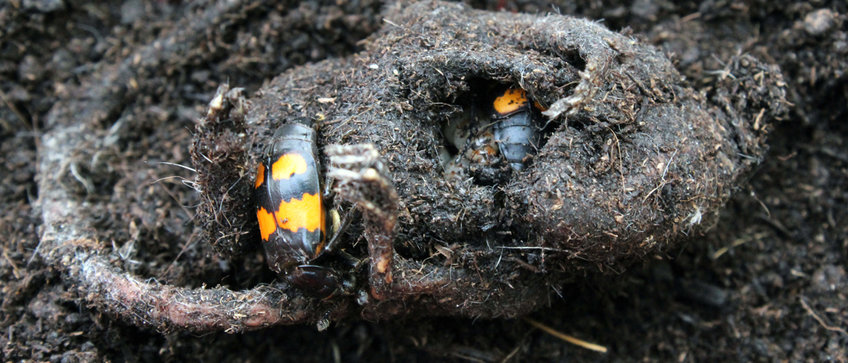
Host Plant Adaptation and Immunity
Our research is mainly centered around the larger question of how insects can cope with a harsh, noxious, or dangerous environment. There are three main lines of research:
1) Disentangling the mechanisms of how insects can cope with food-derived challenges, such as plant defensive chemistries
2) Understanding insects defenses against enemies and pathogens
3) Identifying mechanisms that enable insects adapting to extreme ecological niches
Some Additional Projects:
I) Interplay between nutritional and host plant chemistry
Like all animals, insect herbivores eat to acquire nutrients to fuel growth, development and reproduction. If these nutrients (especially protein and carbohydrates) are eaten in proper amounts, growth and fitness is optimized. However, insect herbivores and their host plants have very different nutrient profiles and plants often contain plant secondary compounds that act to deter feeding and/or are toxic. We aim at understanding how variable food inputs influence insect herbivore growth, linking variation in physiological responses with underlying gene expression, to reveal mechanisms regulating growth under different food conditions (and allelochemicals), mainly focusing on the generalist grasshopper Schistocerca gregaria (the desert locust).
This work is carried out in collaboration with: Spencer T. Behmer, Texas A & M University, USA.
II) BIODIVERSA project on invasive asian ladybird (Harmonia axyridis)
This project aims to decipher the adaptive pathways underlying the global invasive success of the asian ladybird.
Biological invasions act as a major driver of global changes in species distribution. Diverse organisms and ecosystems may be involved, and although not all invasions have a negative impact, the ecological consequences often include the loss of native biological diversity and changes in community structure and ecosystem activity. One of the principal objectives of this project is to decipher the adaptive changes that occurred during the invasion of the asian ladybird through the close integration of evolutionary genomics with experimental studies as well as the characterization of the impacts ofH. axyridis on indigenous ladybird species.
This work is carried out in collaboration with:
Arnaud Estoup, Benoit Facon & Mathieu Gautier, INRA, France,
Andreas Vilcinskas, University of Giessen, Germany and
Francois Verheggen, University of Liege, Belgium.
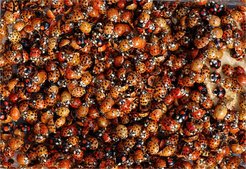
III) Insects exploiting extreme ecological niches
Here we aim at identifying insect-associated microbes (fungi or bacteria) which provide insects living in extreme ecological niches an advantage. We focus on insects which are either adapted to a single, but unusual diet, can utilize an extremely broad range of dietary sources, or can survive a very high pathogen load in their environment.
The specific aims of these projects are to:
i) Identify insect-associated microbes potentially enabling host adaptation to specific ecological niches,
ii) Analyze interdependencies, partitioning of adaptive processes between host & symbiont, and
(biochemical) abilities of insect-associated microbes, and
iii) Exploit insect-associated microbes for biotechnological applications such as biomass conversion.
This work is carried out in collaboration with: Andreas Vilcinskas, Fraunhofer Group Bioresources & LOEWE Center for Insect Biotechnology, Giessen, Germany.
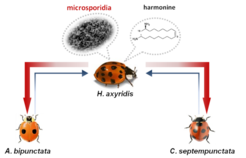
IV) Unraveling adaptive processes in the burying beetles
Burying beetles (Nicrophorus spp.) have evolved to occupy a unique ecological niche by reproducing on small vertebrate cadavers buried in the soil. Carrion is a valuable but ephemeral resource, so there is intense competition with bacterial and fungal decomposers, which decrease its nutritional value and render it unpalatable or even toxic to animals. Burying beetles are therefore expected to utilize effective counterstrategies, e.g. reducing microbial activity or the detoxification of microbial compounds. Parent beetles will cooperate to bury a carcass underground, remove hair/feathers and shape it into a ball to prepare it for consumption by their offspring but also treat the carcass with oral and anal secretions. The anal exudates contain lytic activity and several small molecules with antimicrobial activity. This project aims at identifying proteins involved in (pre-)digestion, carcass preservation and utilization as well as to identify potential microbial symbionts related in the above processes.
This work is carried out in collaboration with:
Andreas Vilcinskas, University of Giessen, Sandra Steiger, University of Ulm, and Martin Kaltenpoth, Department of Insect Symbiosis
